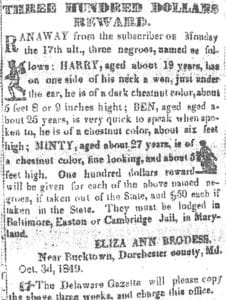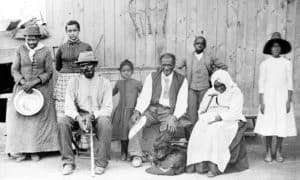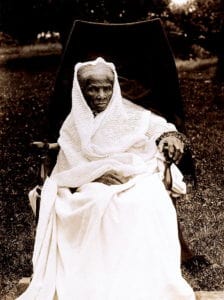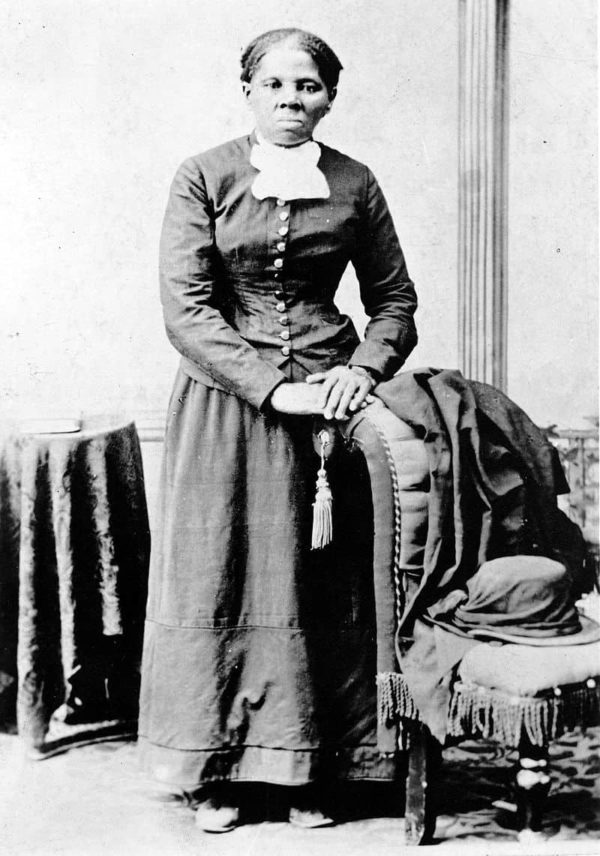Harriet Tubman is the most famous conductor on the Underground Railroad. Born into slavery about 1822 in Maryland, she escaped from the Brodess Farm in 1849 and traveled undetected to Philadelphia in the free state of Pennsylvania.
One of nine children, her parents named her Araminta and called her Minty. At age five or six she was “hired out” to a nearby family to care for their baby. Minty watched over the baby and if it cried, she was whipped.
As a child she was hit with a metal object meant for another slave. She was severely wounded and suffered from seizures and headaches for the rest of her life. But she recovered from her injury and was able to work on the farm. She plowed, hauled logs, and drove oxen. When Minty married John Tubman around 1844, she changed her name to Harriet, her mother’s name.
 Slave Notice Published by Eliza Brodess
Slave Notice Published by Eliza Brodess
In 1849, Edward Brodess, her owner died. Harriet believed that she and members of her family would be sold by his widow, Eliza. Harriet and her brothers Ben and Harry slipped away. Because they had been “hired out,” Eliza Brodess did not learn of their escape right away. She published a runaway slave notice two weeks later. But Ben and Harry soon changed their minds and returned home. They convinced Harriet to return with them. Shortly after, she escaped again and made her way to freedom by night with the help of abolitionists and freed slaves on the Underground Railroad.
“When I found I had crossed that line, I looked at my hands to see if I was the same person. There was such a glory over everything; the sun came like gold through the trees, and over the fields and I felt like I was in heaven.”
 Harriet Tubman (left) and Former Slaves She Helped Rescue
Harriet Tubman (left) and Former Slaves She Helped Rescue
Once a free woman, Harriet decided to return to Maryland to help family members and other slaves travel to freedom. She returned thirteen times in about ten years and guided 70 slaves north.* Harriet guided the people she helped at night. She liked to travel in the winter months when the days were shorter. And Harriet knew that if she left on a Saturday night, the runaway slave notices wouldn’t be printed in the newspapers until Monday.
Harriet worked as a conductor on the Underground Railroad by leading escaping slaves through a network of safe houses. She earned the nickname “Moses of her people” by guiding slaves safely to northern states and Canada.
 A Woodcut of Harriet Tubman Dressed in Her Civil War Clothing
A Woodcut of Harriet Tubman Dressed in Her Civil War Clothing
In 1860, at the start of the Civil War, Harriet became a scout, spy, and a nurse for the Union Army. She helped lead a raid on South Carolina plantations that liberated over 700 slaves.

